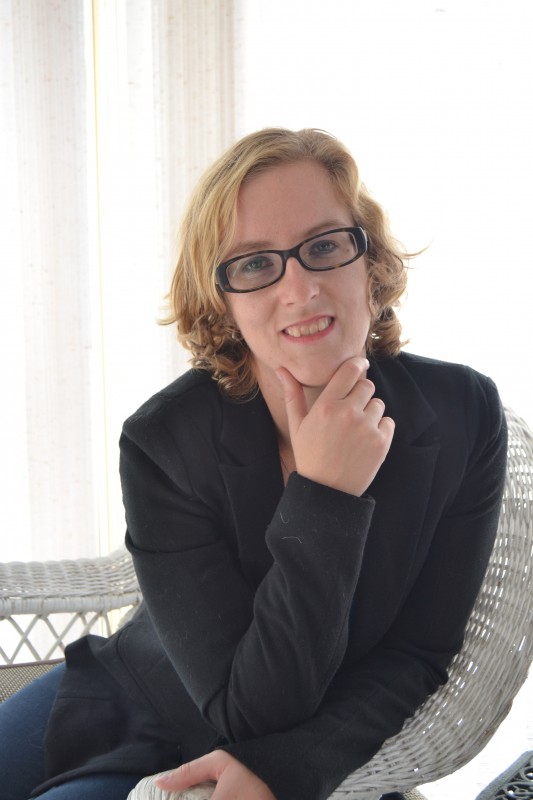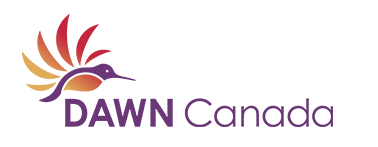My Boobs, My Health and My Life Matter by Emily Gillespie

I am really happy to be sharing the views of our newest Blogger for DAWN-RAFH Canada, Emily Gillespie. Emily holds a Bachelors Degree in Gender Equality and Social Justice, and recently completed her Masters Degree in Critical Disability Studies at York University. Emilys blog and her voice represent an important and too often over-looked perspective in the Breast Cancer dialogue that of young women. She lives in Toronto. Follow her on Twitter @emilygillespiem
Bonnie Brayton National Executive Director of DAWN-RAFH Canada.
My Boobs, My Health and My Life Matter
by Emily Gillespie
Access to health care doesnt mean the same thing for everyone. Its about time we have a conversation about women with disabilities and breast cancer. According to the Canadian Cancer Society, this is the most common form of cancer. October is breast cancer awareness month, and breast cancer, and boobs sell. It is a sexy disease that is easy to market (Ehrenreich). However, with all this hype about breast cancer, women with disabilities and Deaf women (WWD/DW) once more are disregarded, when universal approaches to health care are utilized. This is why it is critical that DAWN-RAFH Canada is running the only campaign in the nation about breast cancer awareness for WWD/DW; in a world that privileges able bodies, DAWN is once more reminding us that our boobs and our health matter.
WWD/DW are more likely to experience poor health because of systemic factors such as poverty and lack of education. They experience physical as well as systemic and attitudinal barriers to cancer screenings, ranging from physically inaccessible mammograms, to lack of ASL interpreters, which results in higher cancer rates (DAWN-RAFH Canada p. 2). DAWN outlines steps for more accessible healthcare, and advocates for implementing procedures and policies that improve accessibility (p. 4). Of particular importance is encouraging accessible health promotion, which means considering WWD/DW when creating educational materials. After all, the first step in accessible health care is making information available. As I read the information about breast cancer on DAWNs website, I am once again confronted with the question, why is the Canadian health care system suggesting that the lives of people with disabilities are less significant? Furthermore, why is DAWN the only organization that is running a campaign for accessible screening?
This entire conversation takes place against the backdrop of a neoliberal rhetoric about healthcare. Canadian culture appears to be inundated with information about being healthy. As I enter the subway in Toronto, I am bombarded with advisements for clinical studies for various ailments. The escalator at the subway in a passive aggressive, yet playful way suggests that I rediscover the stairs. If
I turn on my computer, or look anywhere in my urban jungle, I am overwhelmed with information about healthcare; that is, if I know where to look.
People as consumers (seriously whats with the language?) of the healthcare system are expected to understand their healthcare needs and be proactive. If they do not comply, its just too bad, as the information is out there. Its your fault if you fail to: engage in safer sex, get screened for cancer, eat healthy, or so Im told. The focus has shifted to the so called consumer; therefore, it is essential that health care marketing, particularly in the instance of breast cancer awareness, is accessible to all Canadians, and that the social determinants of health are acknowledged.
The idea that the onus is on the individual is reinforced through the marketing around breast cancer awareness. Im sure Im not the only one with a bookmark and magnet about checking my Thingamaboob. What exactly am I looking for, lumps and bumps? Im supposed to know about my boobs if Im given any information, regardless of how accessible this information is. At my last physical, the doctor asked if Id like him to examine my breasts, and he got an enthusiastic yes on my part. This yes, was shaped by my awareness of the significance of breast health, and my continual self-advocacy work. As a person with largely invisible disabilities, Im aware that I am privileged in my ability to pass as abled bodied, and thus my health concerns are less likely to be ignored.
DAWN-RAFH Canada suggests that attitudinal barriers are one of the largest blocks to health care for WwD. Id suggest that in relation to breast health, this awkward attitudinal dance increases. After all, boobs are socially presented as sexy and fun, on certain bodies, in certain contexts, otherwise you better hide your bra straps lady! Breasts are sexualized, objectified, and also systemically erased. This idea is exemplified in the recent social media outcry around pictures of womens nipples being deleted by various social websites, while similar images of men are permitted in these social spaces. The sexuality of WWD/DW is already socially erased and surrounded by discomfort. It is a logical extension of this social erasure that there are inadequate services for women with disabilities and breast cancer awareness and subsequent services.
DAWN has done significant work around breast cancer awareness, and I encourage everyone to take the time to review the resources on their website. WWD/DW are repeatedly erased from important health related conversations, and DAWN reminds us that access to breast care goes far beyond accessible doors at doctors offices.
In this space of do-it-yourself healthcare, when people are expected to be their own advocates, lets ensure that we use our voices to ensure that we dont settle for anything less than the best care. Going to the doctor isnt exactly fun for anyone, but what does this mean for WWD/DW when the onus is on us to do extra work to advocate because we have a system where are needs arent readily met? Hopefully one day advocacy work wont be a central part of what it means to be a WWD/DW, and we wont be disregarded during important health campaigns.
References
Canadian Cancer Society. (2015, June). Breast cancer statistics. Retrieved from
http://www.bcsc.ca/p/46/l/505/t/Breast-Cancer-Society-of-CanadaStatistics
Ehrenreich, B. (2001, November). Welcome to Cancerland. Harpers Magazine, 43-54.
DAWN-RAFH Canada (2015). What we know about Women with disAbilities and Deaf Women and Access to Cancer Screenings. Retrieved from
https://www.dawncanada.net/resources/resources/#content
